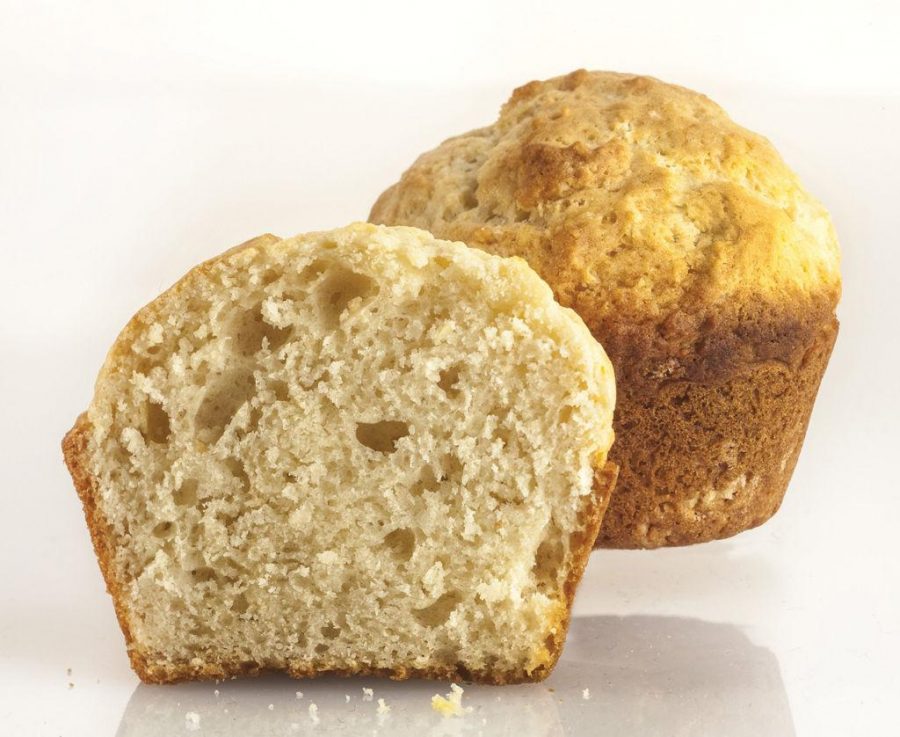Gluten-free: Students feel relief from dietary worries
October 14, 2014
When Paige Haring goes to Market Central, she says she finally feels normal.
Haring, a freshman with Celiac disease and a member of the Gluten Free Awareness League, said the group has made a lot of great changes around campus since its creation in 2011 — efforts that reflect a growing desire to change the food options at Pitt for students who either have Celiac disease or choose to not eat gluten, a protein found in wheat or grain.
“Because of this group, I can go to the Tutto Fresco at Market [Central] and get gluten-free food, and I can go to the Cathedral Cafe and get sandwiches that are labelled as gluten-free,” Haring said. “I don’t have to explain why I need to eat gluten-free.”
Celiac disease is a medical condition in which eating gluten causes inflammation in the small intestine. It affects one in 133 Americans, according to the National Foundation for Celiac Awareness.
The only remedy for this disease is a gluten-free diet. But other people — who identify as non-Celiac gluten sensitive — don’t have Celiac and simply feel better after cutting gluten from their diet.
One of the reasons Haring decided to come to Pitt was because of the Gluten Free Awareness League.
Dhanu Thiyagarajan, a senior bioengineering major, started the Gluten Free Awareness League during her freshman year because she is allergic to wheat and found a lack of meal options.
“I was getting sick all of the time, lost tons of weight right off of the bat,” Thiyagarajan said. “It was really ruining my college experience.”
Sodexo began offering more gluten-free foods in the spring of 2012 after the student group reviewed campus menu options with Sodexo workers and suggested alternatives lacking gluten.
According to Meg Mayer-Costa, a registered dietitian at Pitt, gluten intolerance can cause a variety of health problems.
“Not all gluten intolerance shows up as a [gastrointestinal] concern; for some people it’s migraines, inflammation and pain in joints, short stature, anemia or osteoporosis,” Mayer-Costa said.
An article by NOVA Next, published in May on the PBS website titled, “Unless You Have Celiac Disease, Gluten Sensitivity is in Your Head,” brought up a lot of controversy.
According to Mayer-Costa, consumers should question food advertisements and packaging because they can often convey information that is incorrect.
“I would say the carbohydrate is the most maligned macronutrient at the moment,” Mayer-Costa said. “Very few people who follow a gluten-free diet do so because they have absolute lab values that correlate to them having to need a gluten-free diet.”
According to a list by Udi, a gluten-free food company, Pitt is an “Honorable Mention” university, meaning the University placed just outside of the top ten, on their Top 10 Gluten Free Accommodating Colleges list released this year.
“That’s due to what the club did over the past three years,” Thiyagarajan said.
The club’s goal is to try to make the Top 10 list, Haring said.
Many people who don’t have gluten intolerance are eating gluten-free foods because they think it is synonymous with good health. In a study conducted in 2013 by the NDP Group, a global information company, 30 percent of U.S. adults want to cut gluten out of their diet.
“It’s definitely a misconception that gluten-free means healthy. It just means no gluten,” Haring said.
Mayer-Costa said she believes that gluten-free products have a halo effect, meaning if something is gluten-free, then it must be acceptable to eat it.
The reality is that gluten-free cookies are still cookies and are still unhealthy to eat, Mayer-Costa said. In fact, gluten-free items tend to have more calories in them because they have increased amounts of fats and sugars to make the food taste better.
For example, according to Mayer-Costa, a gluten-free chocolate chip cookie has twice the calories as a regular chocolate chip cookie.
Cutting gluten as a means to lower calories can open up the door to having other issues, Mayer-Costa said. For example, by reducing gluten in the diet, people are getting rid of sweets, cakes and pie, but they are also avoiding all grain sources and might wind up constipated or fatigued.
The Gluten Free Awareness League tries to improve gluten-free options by meeting with the chefs and managers on campus.
“I’ve talked to a lot of restaurants around the country about getting them properly trained and if they don’t have the money to bring someone in professionally to get the certification, I can go in and train them informally by telling them what’s gluten-free and how things should be prepared,” Thiyagarajan said. “It really makes a big difference.”
Another one of the League’s goals is to be a support group for its members.
“It’s difficult being gluten-free at times, especially on a college campus where the most common free food is pizza, and we can’t eat pizza,” Thiyagarajan said.
Mayer-Costa agrees that being gluten-free is especially rough for people who live on campus.
“Sometimes we get so focused on what needs to be removed from the diet that we lose sight of the things that are naturally gluten-free like meats, vegetables, fruits and dairy products,” Mayer-Costa said. “You can do a very good gluten-free diet on this campus, but you have to know what you are looking for.”
Haring said she doesn’t have a problem with people who don’t have Celiac removing gluten from their diets.
“If people are eating gluten-free and awareness is coming from that, then it’s good,” Haring said. “But at the same time, people have to remember that it’s an actual medical problem.”






